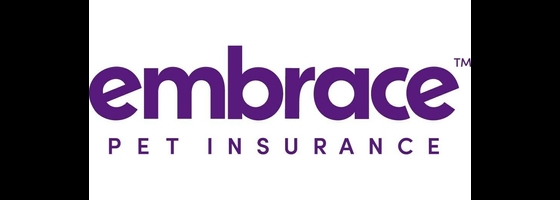Our evaluations and opinions are not influenced by our advertising relationships, but we may earn a commission from our partners’ links. This content is created independently from TIME’s editorial staff. Learn more about it.
According to recent data from popular dog walking service Rover, the average cost of owning a dog in the first year ranges from $1,135 to $5,155, depending on your new dog’s age. A significant portion of this cost is first-year vet bills, including the initial veterinary examination, spay/neuter surgery, and routine vet visits.
While that range is just an example and your costs may be higher or lower, one thing is for certain: pet ownership isn’t cheap. This is true whether you welcome a new dog or cat into your family. Fortunately, pet insurance can help offset veterinary costs over your pet’s lifetime. Here’s what you need to know.

Embrace Pet Insurance
Embrace Pet Insurance
When should you get pet insurance?
It’s best to get pet insurance when your pet is very young, as they’re unlikely to have any pre-existing conditions. Insurance companies often exclude treatment costs for pre-existing conditions from policies.
For instance, if your pet develops diabetes at age five, but you already have pet insurance, your insurance could offset any associated medication and treatment costs. But if didn’t get insurance until after your pet’s diagnosis, it likely wouldn’t cover any diabetes medications or treatments.
Pet insurance premiums increase as your dog or cat ages, so getting insurance for your puppy or kitten could mean you’re paying less for coverage each month.
How does pet insurance work?
Pet insurance plans vary, but generally, they either cover a percentage of certain veterinary costs upfront or reimburse you for covered treatments. In exchange for the insurer compensating you for a portion of your costs, you’ll pay monthly premiums as you would with other types of insurance.
How much is pet insurance?
Your monthly pet insurance premiums will vary depending on several factors, including your pet’s age and overall health, the type of pet you have, your location, and the pet insurance company you choose. Popular insurer Progressive indicates that insurance for your cat can cost as little as $6 monthly through its partner Pets Best, while the average insurance cost for large breed dogs ranges from $25.03 to $72.53 per month.
Fortunately, many insurance companies can deliver quotes for pet insurance online in a matter of minutes. For instance, Lemonade lets you check prices by inputting some basic information on its website, including your name, location, and the type of pet you have.
What does pet insurance cover?
Covered expenses vary depending on the insurer and policy you choose. But typically, pet insurance can offset the cost of vaccinations, diagnostic testing, surgeries, and emergency veterinary care. Some insurance companies may also have a wellness add-on that provides additional coverage for preventative care, including dental cleanings and flea and tick or heartworm medications.
Veterinary care costs
Per analysis by Rover, first-year dog ownership costs range from $1,135 to $5,155, with veterinary costs accounting for $850 to $2,430 of that range. By Rover estimates, first-year cat ownership is slightly less expensive, ranging from $755 to $3,020, with veterinary costs making up about $595 to $1,190 of those amounts.
Besides the cost difference between dogs and cats, veterinary expenses vary widely depending on your pet’s age and health, your location, and the breed of animal you have. For instance, vet expenses for large-breed dogs tend to be higher than vet expenses for small-breed dogs, per the ASPCA. Pet parents with small dogs pay around $512 in annual vet costs, while those with large dogs pay around $1,040 annually. Using those figures, if your dog lives for 13 years, you could pay anywhere from $6,656 to $13,524 over your dog’s lifetime, depending on the breed.
Pet insurance alternatives
In many cases, pet insurance is worth the cost. If you decide not to get this coverage for your dog or cat, your options for paying for veterinary care are more limited. Some veterinary clinics may offer discounted treatments for certain things. For instance, you may be able to find an option to spay or neuter your dog for a lower-than-average cost.
But if these clinics aren’t accessible to you, you’ll probably have to pay for your pet’s veterinary costs out of pocket. You can consider using your savings, credit card, or even a personal loan if a large, unexpected expense arises.
Frequently asked questions (FAQs)
Is it worth getting your dog insured?
Pet insurance for your dog can be worth it, but whether it makes sense for your pet depends on their age, overall health, and other factors. If you’re considering pet insurance, compare options from different insurance companies to find a policy that’s affordable for you and offers the coverage you need.
Is it okay to not have pet insurance?
It is perfectly fine not to have pet insurance, though you won’t be reimbursed for any of your cat or dog’s veterinary costs. Instead, you’ll need to pay those costs entirely out of pocket, which could get expensive.
What percentage of pets are insured?
According to the Insurance Information Institute, there were 4.8 million pets insured in the United States in 2022. While this number has been steadily increasing, it remains a small percentage of the total pets in the U.S. While it’s harder to pin down the total number of pets, the percentage of insured pets in the U.S. is less than 5%.
Which pet costs more to insure?
Typically, dogs are more expensive to insure than cats. Per NAPHIA estimates, accident and illness coverage for cats costs around $387 per year, while the same coverage for dogs costs $640 annually.
The information presented here is created independently from the TIME editorial staff. To learn more, see our About page.

